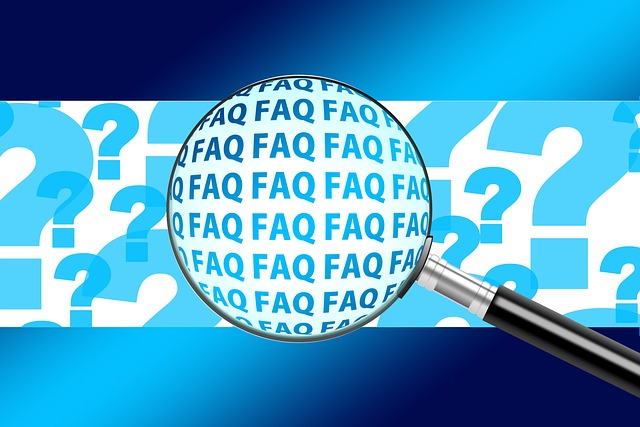What are Small Business Financial Statements?

Financial statements are essential financial reports that provide a snapshot of a small business’s financial health. These reports help small businesses assess their financial position, make informed decisions, and plan for the future.
The main financial statements that businesses use are:
- The balance sheet.
- Income statement (also called profit and loss statement or P&L Statement).
- Cash flow statement.
- Account receivable aging reports.
- Budget statement.
Creating a Solid Financial Plan
Financial documents are crucial in creating a solid financial plan for small businesses. By examining balance sheets, income statements, and cash flow statements, entrepreneurs can identify areas where they need to cut costs or increase revenue. This information helps them develop strategies to achieve their financial goals.
Accounting Standards
Generally accepted accounting principles (GAAP) are crucial in preparing financial statements. These principles provide a standardized framework for recording and reporting financial information, ensuring consistency and comparability across different organizations.
By following GAAP, companies can present their financial statements in a manner that is transparent, reliable, and useful to stakeholders such as investors, creditors, and regulators. GAAP helps to ensure that financial statements accurately reflect the financial health and performance of a company, enabling informed decision-making.
However, not all businesses follow GAAP when creating financial statements. For example, international businesses are more likely to use International Financial Reporting Standards (IFRS).
What are the Most Useful Financial Documents for Small Businesses?
Here are the most important types of financial statements for small business owners.
Profit and Loss (P&L) Statements
P&L statements, also known as income statements or financial statements, are crucial documents for small businesses. They provide a snapshot of a company’s financial performance over a specific period, usually monthly, quarterly, or annually.
The income or P&L statement includes the following:
- Revenue.
- Cost of goods sold.
- Gross profit.
- Operating expenses.
- Net profit or loss.
- Earnings before interest and taxes (EBIT).
- Interest expenses.
- Taxes.
- Net income or loss (aka “the bottom line”).
Tracking Revenue, Expenses, and Net Profit Margins
One of the primary purposes of the profit and loss statement is to track revenue, expenses, and net profit margins. These statements help small business owners understand how much money they are making from sales and how much they are spending on expenses like rent, utilities, salaries, and supplies.
The income statement also includes non-operating revenue, such as royalty payment receipts, income from affiliate advertisers, and more. By comparing revenue with expenses, entrepreneurs can determine their net profit or loss.
Key Information for Financial Analysis
P&L statements offer critical information that helps in analyzing the financial health of a business. They reveal the company’s profitability by showing the gross profit (revenue minus direct costs) and net profit (revenue minus all expenses). Business owners can use this data to assess their financial position and make informed decisions about pricing strategies or cost-cutting measures.
Benefits of P&L Statements
- Provides an overview of a company’s financial performance.
- Helps track revenue, expenses, and net profit margins.
- Assists in identifying areas where expenses can be reduced or revenue increased.
- Enables comparison with industry benchmarks to gauge competitiveness.
Balance Sheets
A balance sheet is one of the most beneficial financial documents for small businesses. It provides an at-a-glance view of a company’s financial position, including its assets, liabilities, and equity, at a specific point in time.
This important financial statement can include:
- Assets.
- Liabilities.
- Shareholders’ Equity.
- Current Assets.
- Noncurrent Assets.
- Current Liabilities.
- Noncurrent Liabilities.
- Retained Earnings.
- Common Stock.
- Intangible Assets.
- Property, Plant, and Equipment.
- Cash and Cash Equivalents.
- Accounts Receivable.
- Inventory.
- Accounts Payable.
- Long-term Debt.
- Prepaid Expenses.
- Accrued Expenses.
- Investments.
Importance of Balance Sheets
Balance sheets are crucial in evaluating a company’s solvency and liquidity. By examining the balance sheet, you can determine if the business has enough resources to meet its financial obligations. It helps you understand the overall financial health of your business.
Assessing Business Growth or Decline
One key aspect of using balance sheets is evaluating the growth or decline of your business over time. By comparing balance sheets from different periods, you can track changes in assets, liabilities, and equity. This allows you to identify trends and make informed decisions regarding future investments or financing activities.
Understanding Key Components
To effectively analyze a balance sheet, it’s crucial to understand its key components:
- Assets: These represent what the company owns or controls, such as cash equivalents, accounts receivable, inventory, and property.
- Liabilities: These are the company’s financial obligations or debts that must be paid off within a specific timeframe.
- Equity: Also known as shareholders’ equity or net worth, it represents the residual interest in the company after deducting liabilities from assets.
Ratios for Financial Analysis
Balance sheets also provide data that can be used to calculate various ratios for financial analysis. These ratios help assess liquidity (ability to meet short-term obligations) and leverage (extent of debt financing). Examples include the current ratio (current assets divided by current liabilities) and debt-to-equity ratio (total debt divided by total equity).
Cash Flow Statements
Cash flow statements are one of the most beneficial financial documents for small businesses. They help track the inflows and outflows of cash, giving you a clear picture of your company’s financial health.
Typically, the cash flow statement shows:
- Operating activities.
- Investing activities such as purchasing fixed assets.
- Financing activities.
- Net cash flow.
- Beginning cash balance.
- Ending cash balance.
Purpose and Significance
The purpose of a cash flow statement is to show how money moves in and out of your business. It helps you understand where your cash is coming from (cash inflows) and where it’s going (cash outflows). This information is crucial for making informed decisions about managing your finances effectively.
Differentiating Activities
Cash flow statements categorize activities into three main types: operating, investing, and financing activities. Operating activities include day-to-day business operations like sales revenue and expenses. Investing activities involve buying or selling assets such as equipment or investments. Financing activities cover sources of funding like loans or equity financing.
Managing Working Capital
Cash flow statements play a vital role in managing working capital efficiently. By analyzing the statement, you can identify potential cash flow issues or problems that may arise in the future. This allows you to address these concerns before they become major obstacles proactively.
Key Takeaways:
- Cash flow statements track the cash movement in and out of your business.
- They differentiate between operating, investing, and financing activities.
- Cash flow statements help manage working capital effectively by identifying potential issues or problems ahead of time.
What are Accounts Receivable Aging Reports?
Accounts receivable aging reports are an essential financial document for small businesses that sell on credit. These reports provide valuable insights into the outstanding payments owed to a business, helping track and manage cash flows effectively.
By analyzing accounts receivable aging reports, businesses can identify overdue invoices and potential cash flow issues. This allows them to take necessary actions to improve their financial performance.
- Track Outstanding Payments: Accounts receivable aging reports help businesses keep track of the money they are owed by customers. It provides a detailed breakdown of all outstanding invoices, categorizing them based on their age. This information allows businesses to prioritize collections efforts and follow up with customers with overdue payments.
- Manage Cash Flow: Cash flow is crucial for the survival and growth of any business. By regularly reviewing accounts receivable aging reports, businesses can identify any bottlenecks in cash flows and address them promptly. They can also forecast future cash inflows more accurately, allowing for better financial planning and decision-making.
- Assess Financial Performance: Analyzing accounts receivable aging reports enables businesses to assess their overall financial performance. By comparing current and past reports, they can determine if they are improving or facing challenges in collecting customer payments. This information helps in identifying trends, patterns, or areas that require attention.
How do I Leverage Financial Documents for Business Success?
Financial documents are like the secret sauce that can help small businesses make smart financial decisions. These documents provide valuable insights into a company’s financial health and performance, allowing business owners to stay on top of their game.
Let’s dive into how you can leverage financial documents for your business success.
Assessing Financial Health and Performance
Regularly reviewing financial reports and statements is vital to understanding the overall financial health of your business. By analyzing these documents, you can gauge how well your business is performing financially. This information helps you identify areas of strength and weakness, enabling you to make informed decisions to improve profitability.
Securing Business Loans and Financing
Having solid financial documentation is crucial. Lenders and investors want to see that your business has a sound financial position before they commit any funds. By presenting accurate and up-to-date financial reports, you increase your chances of obtaining the necessary funding to support your growth plans.
Tracking Business Operations
Financial documents also play a vital role in tracking day-to-day operations. By maintaining proper bookkeeping records using accounting software or spreadsheets, you can monitor income, expenses, invoices, and payments efficiently. These records not only help with tax compliance but also provide insights into cash flow management and budgeting.
Planning for the Future
Financial documents are an essential component of both your finance plan and business plan. They serve as a roadmap for achieving long-term goals by outlining projected revenues, expenses, profits, and investments. With this information, you can develop strategies to navigate potential challenges while maximizing growth opportunities.
Frequently Asked Questions
Here are the common questions about the most useful financial documents for small businesses.
What are Budget Reports and Budget vs Actual Analysis
Budget reports are essential financial documents for small businesses as they provide a comprehensive overview of the company’s financial plan. These reports track expenses, income, and cash flow to help business owners understand their financial performance.
Budget vs actual analysis is a comparison between projected budget figures and the actual financial performance of the business. This analysis helps identify any variances or deviations from the original budget. By examining these discrepancies, small businesses can make informed financial decisions and improve their financial performance.
Benefits of Budget Reports:
- Track Expenses: Budget reports allow small businesses to monitor their expenses closely. They provide a breakdown of where money is being spent, helping owners identify areas where costs can be reduced or optimized.
- Financial Decision-Making: With budget reports in hand, small business owners can make informed decisions about investments, hiring, and other financial matters. They have a clear understanding of their current financial standing and can plan accordingly.
- Improving Financial Performance: By comparing actual figures with budgeted amounts, businesses can identify areas where they are falling short or exceeding expectations. This analysis enables them to take corrective actions to improve their financial performance.
Steps for Budget vs Actual Analysis:
- Gather Financial Data: Collect all relevant financial statements such as income statements, balance sheets, and cash flow statements.
- Compare Figures: Compare the actual figures from your financial statements with the projected budget amounts for each category (e.g., sales, revenue, or operating expenses).
- Identify Variances: Note any significant differences between the actual and budgeted amounts. Determine whether these variances are favorable (exceeding expectations) or unfavorable (falling short).
- Analyze Causes: Investigate the reasons behind the variances by examining factors such as changes in market conditions, unexpected expenses, or pricing strategies.
What to Include in a Financial Statement and Comparing Statements Over Time?
Comparing financial statements over different periods allows small business owners to identify trends and patterns in their finances. It helps them understand how their company is doing financially and make informed decisions for budgeting, accounting, and planning.
Analyzing financial reports provides valuable insights into a business’s revenue, expenses, assets, liabilities, and cash flow. By examining these reports closely, entrepreneurs can assess their company’s profitability, liquidity, solvency, and overall financial stability.
By regularly reviewing these financial documents, small business owners can gain valuable insights into their company’s performance. This information enables them to make better-informed decisions about budgeting, accounting practices, strategic planning, investment opportunities, and more.
How often should I review my Financial Statements?
It is recommended to review your financial statements monthly to stay updated with the current state of your business finances. However, during critical periods or when making important decisions such as seeking financing or planning for expansion, more frequent reviews may be necessary.
Regular financial statement analysis lets you gain insights into your business’s performance over time. It helps you understand trends in revenue generation, expense management, and cash flow patterns.
By analyzing these statements regularly, you can identify areas where improvements can be made, or potential risks may arise. In addition to monthly or quarterly statements, annual financial statements help to track performance year-over-year.
Can I use accounting software to generate Financial Documents?
Yes, accounting software like QuickBooks or Xero can streamline the process of generating these financial documents. They offer templates and automated calculations that simplify the creation of P&L statements, balance sheets, cash flow statements, and other essential reports.
Accounting Software Pros & Cons
Pros:
- Automate the process of generating financial statements.
- Reduce the risk of human error in preparing financial statements.
- Easy access to financial data and documents from anywhere.
- Customizable templates for financial statements.
- Integration with other systems, such as bank accounts or inventory management.
Cons:
- Accounting software can be expensive, especially with limited budgets.
- Using accounting software may require some training.
- May not provide the same level of flexibility as manually preparing financial statements.
- Storing financial data in accounting software may pose security risks.
- Technical issues or system failures can disrupt the process of generating financial statements.
Can I understand and use Financial Documents without a finance background?
Absolutely! While financial documents may seem intimidating initially, they are designed to be accessible to business owners of all backgrounds. Take the time to familiarize yourself with the basics, seek guidance from professionals if needed, and remember that practice makes perfect.
Are there any other important Financial Documents for my Small Business?
In addition to the ones mentioned in this blog post, you may also want to explore tax returns, sales reports, inventory records, and employee payroll information. These documents can provide further insights into your business’s financial performance and help you make more informed decisions.
Most Useful Financial Documents for Small Businesses – Final Thoughts
You now have a solid understanding of the most useful financial documents for small businesses. These documents – including Profit and Loss (P&L) statements, balance sheets, cash flow statements, accounts receivable aging reports, and budget reports – are essential tools that provide valuable insights into your business’s financial health.
By leveraging these documents effectively, you can make informed decisions and pave the way for your business’s success. Now that you know the significance of financial documents, it’s time to put this knowledge into action.
Start by organizing and regularly updating your financial records. Use these documents to analyze trends, identify areas for improvement, and make strategic decisions that will drive growth.
Remember, financial statements are not just numbers on paper; they tell the story of your business’s journey. Embrace them as powerful tools that will guide you toward achieving your goals.
Contact us if you have more questions about financial documents or to apply for a small business loan. Our alternative funding experts can help you leverage your financial documents for the most advantageous business financing options.





















